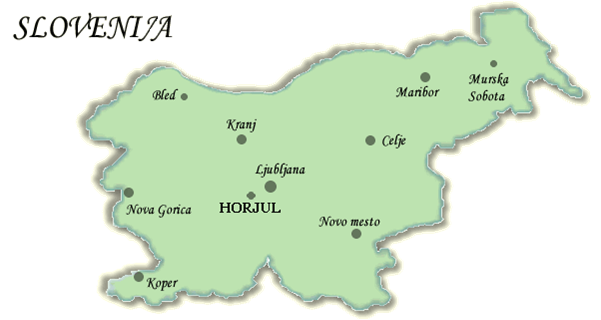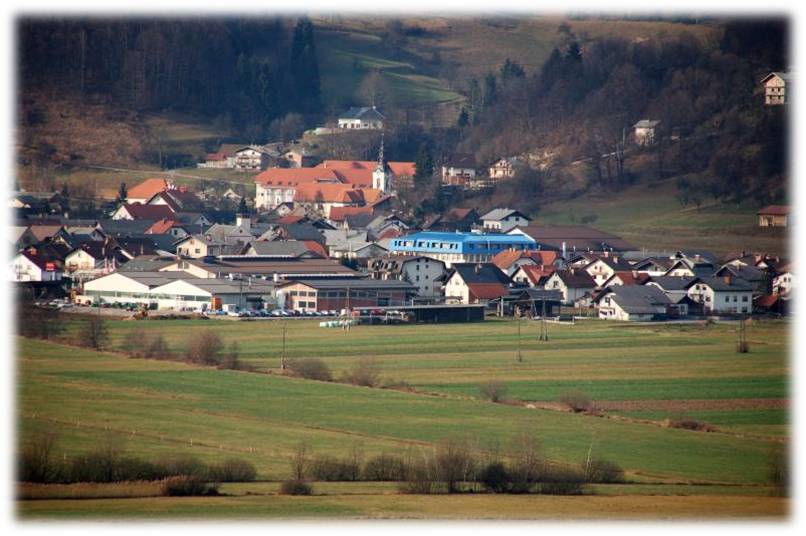
Our school is situated in the valley of Horjul that stretches west of Ljubljana between the Alpine and the Dinaric-Karst areas. Above the valley, there are on average, up to 700m above sea level, many green hills covered by a mixed forest which predominantly consists of beech and spruce. Several karst caves can also be found in the area. They are located in the vicinity of the villages Vrzdenec, Samotorica, and Žažar. At the bottom of the valley where two tiny rivers the Šujica and the Horjulščica have found their ways, we can still find a flowering plant snake’s head fritillary (Fritillaria meleagris). The climate is moderate continental with the average temperatures from -2 to +22˚C. The majority of precipitation occurs in autumn and in spring. Since our valley is located on the edge of marshes, the meadows often get flooded during abundant rains. In winter the valley is often covered in fog. The position of our valley provides many advantages, such as the vicinity of the capital where many people commute to work daily while on the other hand we can enjoy the natural beauty that surrounds us and gives endless possibilities of relaxation and sports activities in the fresh air.
It is hard to define the age of the village since there is no written evidence, but it is definite that its history dates far back, probably even into the times of the Roman Empire. Its advantageous position makes the valley an important strategic point that was already fortified on the north side by the Romans. The remains of Roman “castra” can still be found on some hills in the vicinity. The “castra” Tabor above Izvirša is probably the most famous one. The area of the contemporary Horjul supposedly used to serve as walking gardens for the elite of the Roman city of Emona (today Ljubljana). Some theories claim that the name of the village Horjul has its origin in the Roman Times. A renowned Slovenian cartographer Franci Planina proposes that: “A long time ago Horjul was named “Frjuj” which was supposed to mean Forum Julijum - meaning “Julius’ garden”. Another theory suggests that the name appeared in the time of Julius Caesar and that the name of the village comes from “Hora Julianis”, denoting the reign of Julius Caesar.

The village Horjul, the centre of the valley is situated among the green hills. It was a hometown to Kristina Brenkova, Slovene youth writer. The village is the most beautiful in summer when the sun shines on the fields. Many interesting historical and natural sights can be found in this village. In the parish church that is dedicated to Saint Margaret, it is possible to admire some well-preserved frescoes and several paintings by an academic painter Janez Šubic that were made in 1877. He depicted Olybrius’ hearing of Saint Margaret and her martyr death. At the village’s graveyard there is a Pietà relief, created by a well-known Slovenian sculptor France Kralj in 1923 and a wall that was planned by an internationally acclaimed Slovene architect Jože Plečnik. The people of Horjul are also proud of the new municipality building with the new village square where all the public celebrations take place. Another important and popular new building is a modern sports facility called Sport Park Horjul that is one of the best in-door inline hockey rinks in Slovenia.